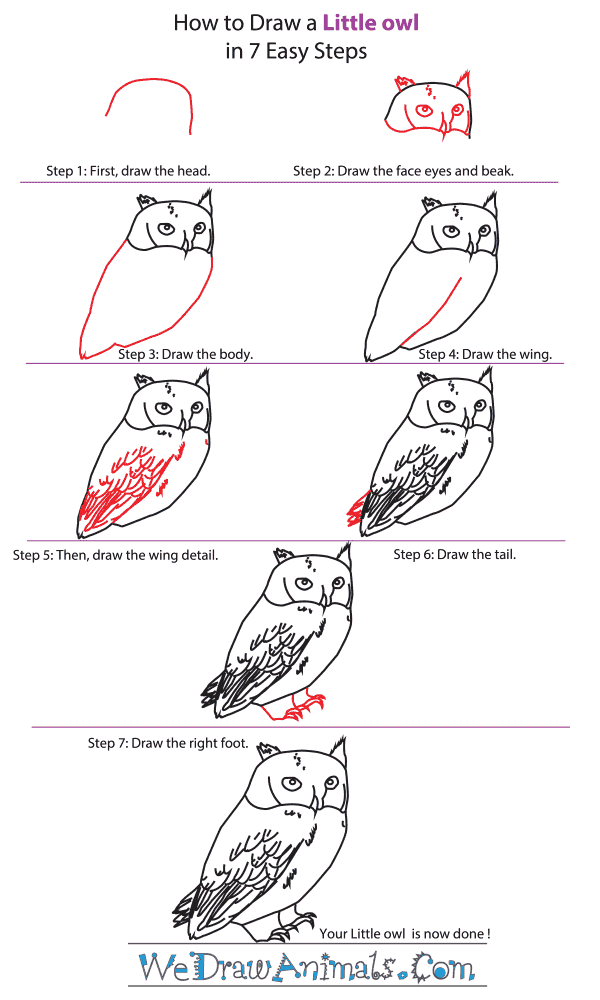In this quick tutorial you'll learn how to draw a Little Owl in 7 easy steps - great for kids and novice artists.
The images above represent how your finished drawing is going to look and the steps involved.
Below are the individual steps - you can click on each one for a High Resolution printable PDF version.
At the bottom you can read some interesting facts about the Little Owl.
Make sure you also check out any of the hundreds of drawing tutorials grouped by category.
How to Draw a Little Owl - Step-by-Step Tutorial
Step 1: Begin you tiny owl by drawing a dome for the head.
Step 2: Draw two triangles on top for the ears - continue by adding some detail to the face. Remember, owls have very big eyes to see in the dark!
Step 3: Draw a lumpy cone shape for the body, tapering down to the tail!
Step 4: Add a single curved line from the tail up the body for the wing.
Step 5: Awesome - now add some detail to the wings by drawing the patterns.
Step 6: Continue by drawing the tail, just a short thing peaking out the other side of the wing.
Step 7: Let's finish up by giving our tiny owl some feet! Draw some wide legs with the talons at the ends.
Interesting Facts about the LITTLE OWL
The Little Owl is a member of the bird family and the scientific term for them is Athene noctua. This species gets its name from the reference of Greek goddess Athena, who had this species as a pet. They have a brown body, white and black spots, yellow eyes, and it flies with a leap like a woodpecker. These exist worldwide, and are the most numerous type of owl in the world.
Did you know?
- The animal was first documented in 1769.
- They can reach up to almost 3/4 of a foot tall.
- The bird can have a wingspan of almost 2 feet wide.
- This species weighs up to almost .5 pounds.
- The animal can live for up to 3 years.
- This bird was introduced to New Zealand in the 20th Century.
- The species can lay up to 5 eggs.
- This animal is one of 13 types of this species.
They live in the temperate and warm areas of Europe, Asia, and northern Africa. This is a predatory bird that eats insects, earthworms, amphibians, birds, and mammals. The bird is highly adaptable to human habitation. There are not many of these creatures, but they are the least concern for a possibility of extinction.








